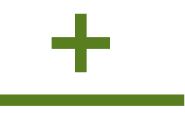In the construction industry, safety is non-negotiable. This is particularly true when working in industries such as chemicals and energy, where workers may be exposed to serious hazards. For every construction job, safety should be the top priority, from project planning to work execution. Every construction company should focus on continuous improvement regarding safety culture and should have detailed procedures in place to systematically identify, examine, and control health and safety hazards. One of the most common tools used to achieve this is a job safety analysis, or a JSA.
Below we detail everything you need to know about job safety analysis procedures, including key elements and the biggest benefits of a job safety analysis.
What is a Job Safety Analysis?
A job safety analysis is a construction safety tool that can be used on-site to define and control hazards associated with a particular process or job. It provides workers with a systematic method to examine and document every task within a given job to identify health and safety hazards and risks and the steps to control each task. It helps construction personnel identify the safest possible way to perform a job.


Basic Steps in a Job Safety Analysis Procedure
Completing a job safety analysis itself is not super complicated, but deeply understanding the job at hand is important, as a robust and clear understanding of the job results in a clearer job safety analysis. The key to a successful JSA is who is performing it. Because it’s the work crew who are completing JSAs, they are forced to think through the job to identify potential hazards.
The basic steps required in a job safety analysis procedure are as follows:
- Select the job to be analyzed.
- Break the job down into a sequence of steps.
- Identify any potential hazards.
- Determine preventive measures needed to overcome identified hazards.
Benefits of a Job Safety Analysis
A job safety analysis has many notable benefits in the construction industry, such as those detailed below:
1) Prevents Hazardous Conditions
Utilizing a job safety analysis tool helps construction companies prevent and control each potentially hazardous condition that may be present at a job site, preventing accidents. By systematically analyzing each step of a job or process in detail, employees can identify previously undetected hazards and further ensure a safe work environment is achieved.
2) Creates a Visual Aid
The act of using and engaging with a job safety analysis tool is a great visual aid for employees. By breaking down a job or process into a clear sequence of steps, employees can gain an even deeper comprehension of the job and what exactly is needed to perform it safely. It can also be a great tool for new employees and can improve their new hire orientation. With clear, detailed safety procedures and systems in place, employee awareness surrounding health and safety is increased.
3) Helps Meet Safety Standards
In addition to keeping workers safe and promoting a strong safety culture, job safety analysis procedures help companies meet national and local safety regulations. In 2021, the most frequently cited OSHA violations were as follows:
- Fall Protection, General Requirements (1926.501)
- Respiratory Protection (1910.134)
- Ladders (1926.1053)
- Scaffolding (1926.451)
- Hazard Communication (1910.1200)
- Lockout/Tagout (1910.147)
- Fall Protection, Training Requirements (1926.503)
- Personal Protective and Lifesaving Equipment, Eye and Face Protection (1926.102)
Job safety analysis tools address all of the above hazards, helping companies keep their workers safe and preventing OSHA violations.
4) Improves Communication
When completing a job safety analysis, many levels within a company come together and communicate about health and safety. It can enable better communication and promote continuous improvement surrounding safety.
H+M Industrial: Inspiring a Lifestyle of Safety
At H+M Industrial EPC, we believe safe industrial practice is a way of life. Every job we undertake, including all work planning and execution, starts with safety. In addition to our use of job safety analysis procedures, we have implemented an Extra Hazardous Work (EHW) Program.
Here are some highlights of our EHW Program:
- The program’s goal is early detection and communication.
- It begins in the estimating/proposal phase using the EHW checklist.
- If identified, Safe Work Plans are created and communicated.
- All plans must be approved by corporate management before work begins.
- Crews can identify EHW, stop the job, and develop a Safe Work Plan for approval.

The H+M Industrial Team
For over three decades, we have provided best-in-class capital project management services to Energy and Chemical industries through our proven EPC approach. We are dedicated to providing trust, experience, and efficiency through all stages of engineering, procurement, and construction--on budget and on time.

Partnering with H+M Modular
H+M Modular, a division of H+M Industrial EPC, specializes in custom fabricated equipment, modules, and skids for energy and chemical industries. The approach emphasizes the potential for decreased risk through more controlled fabrication, leading to enhanced quality and safety, reduced labor costs and construction times, improved labor availability, and solutions to geographic challenges. We are dedicated to providing trust, experience, and efficiency through all stages of traditional and modular construction projects using our proven EPFC approach, If you're considering modular fabrication, we invite you to connect with us to learn about how modular solutions can improve project outcomes.





